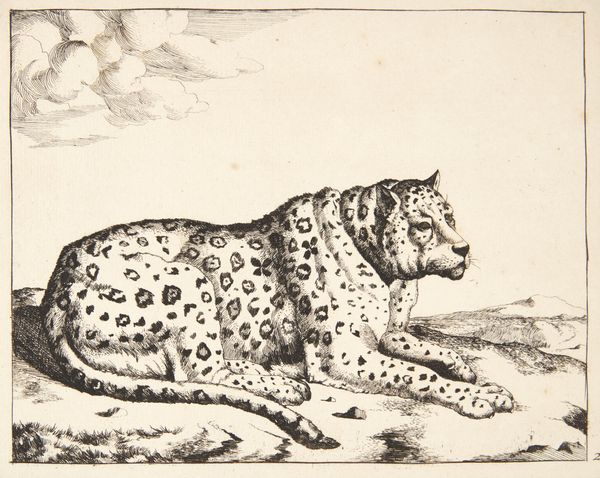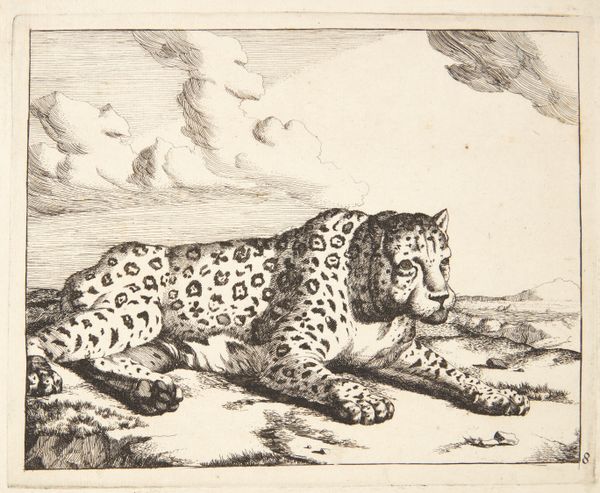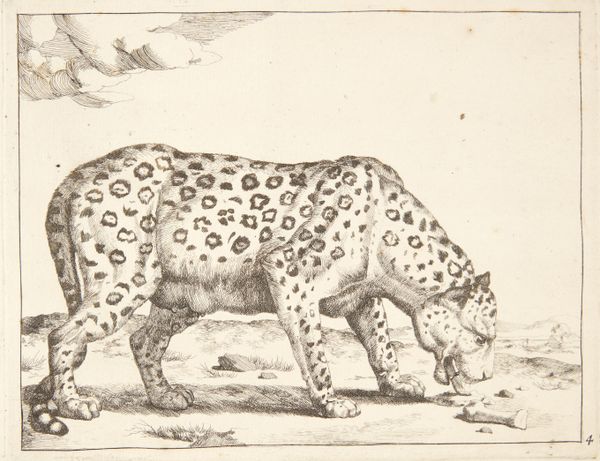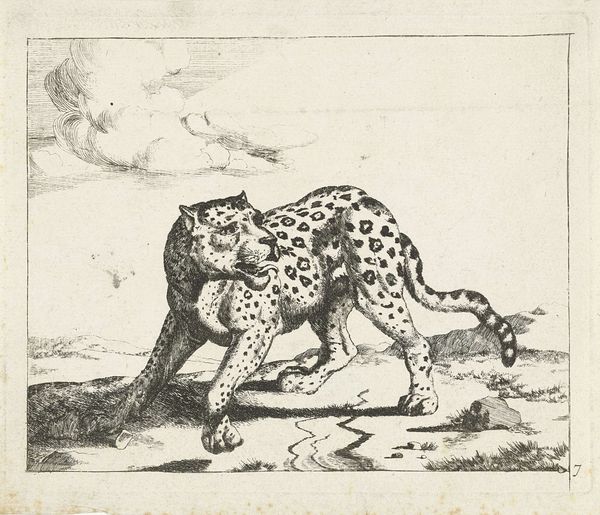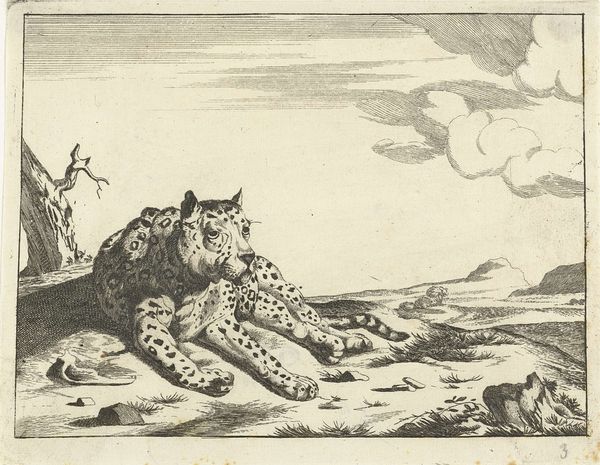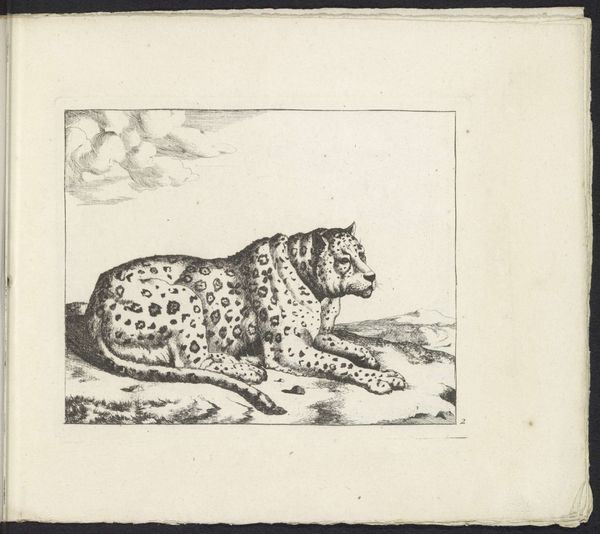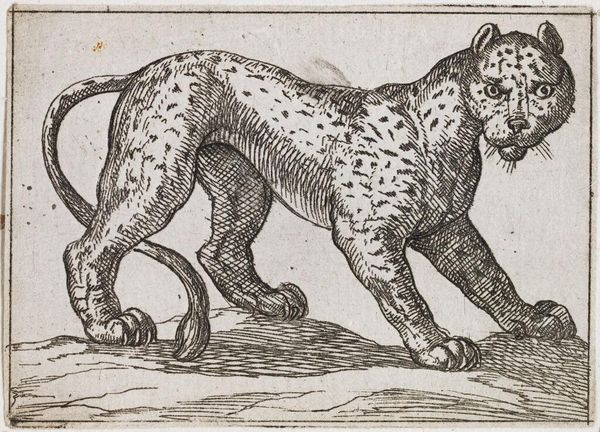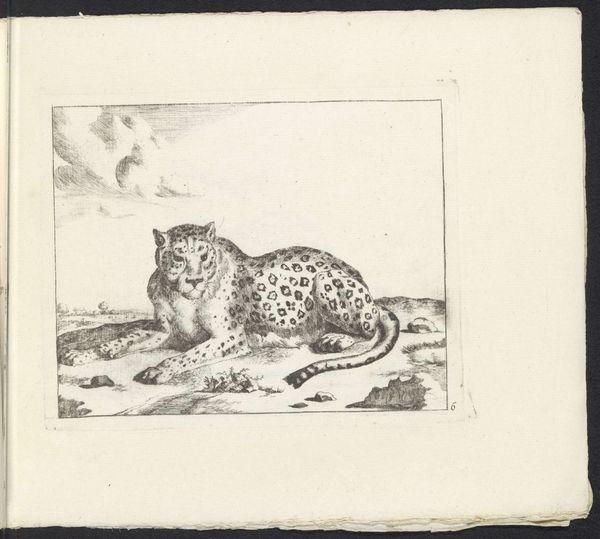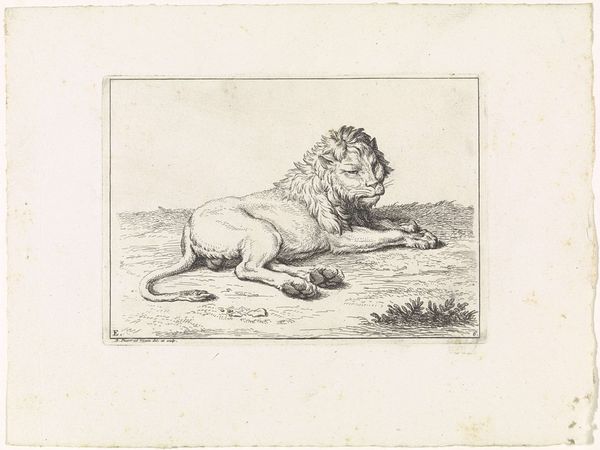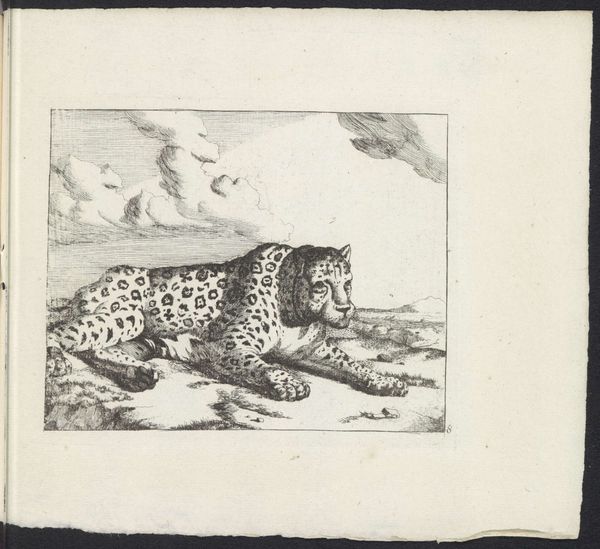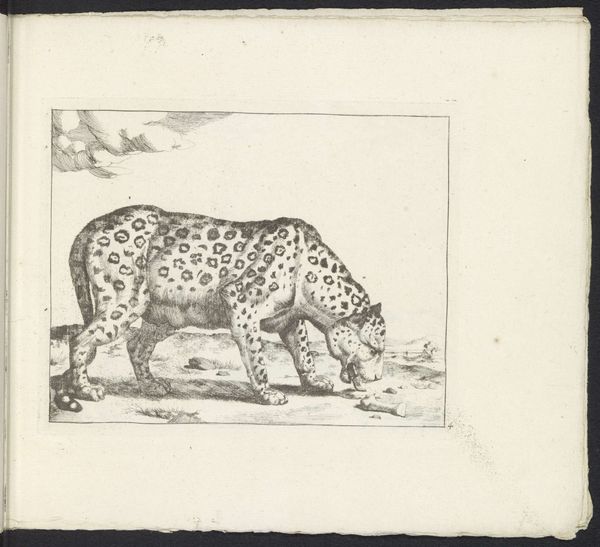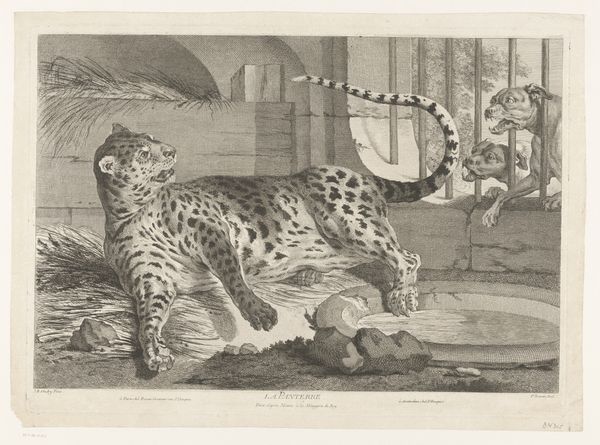
print, etching
#
ink drawing
#
animal
#
dutch-golden-age
# print
#
etching
#
landscape
#
figuration
Dimensions: 138 mm (height) x 174 mm (width) (plademaal)
Editor: This is Marcus de Bye’s "Liggende leopard, vendt mod venstre," dating from around 1638 to 1690. It's an etching, and what strikes me is its tranquility; despite being a predator, the leopard appears so relaxed, almost domestic. How do you interpret this work? Curator: The image of a leopard, then as now, carries considerable symbolic weight. Here, rendered through the detailed lines of etching, it's interesting to consider the cultural context of the Dutch Golden Age. What did this animal represent to viewers of that era, removed from the animal's natural habitat? Editor: Possibly exoticism? A display of knowledge about the wider world? Curator: Exactly. But also, consider the potential for conflicting interpretations. The leopard might symbolize power and strength, but in this state of repose, might it also represent controlled or even domesticated power, brought under human dominion through artistic representation? Does the landscape it occupies enhance that symbolism? Editor: That’s a really interesting point. The background is minimal, almost barren, highlighting the leopard’s stillness even further. Curator: The spots, too, can be seen as symbols themselves. The ordered pattern is a visually pleasing signifier of the untamed world. Think about how different cultures have historically understood and visually represented powerful animals; this etching contributes to a long history of using animal imagery to explore themes of nature, culture, and power. Editor: So, what I initially saw as simply a peaceful scene contains deeper layers about how humans perceive and portray their relationship with nature. Fascinating. Curator: Precisely. The image of the leopard becomes a potent vehicle for exploring our own cultural values and anxieties regarding the natural world.
Comments
No comments
Be the first to comment and join the conversation on the ultimate creative platform.
